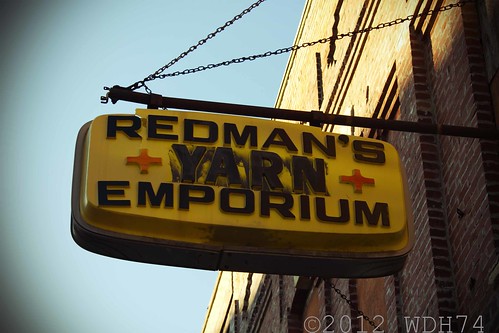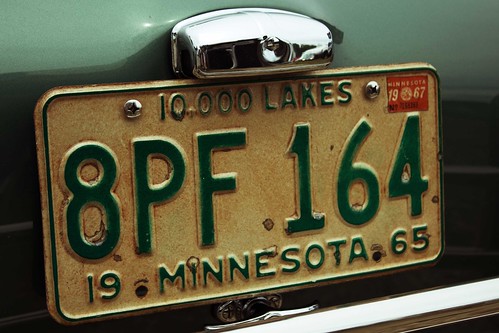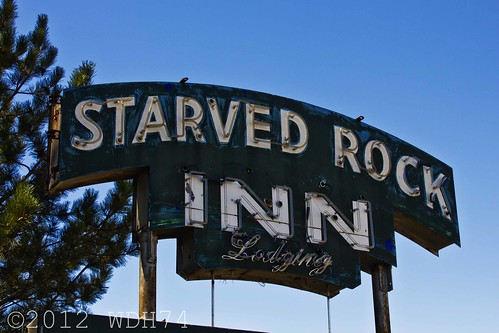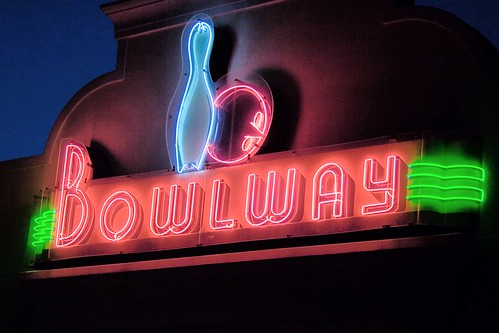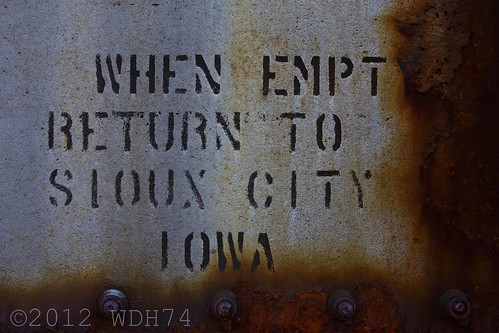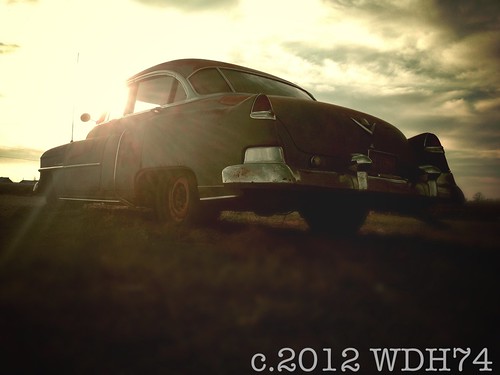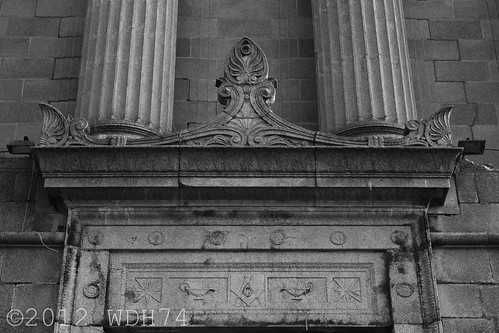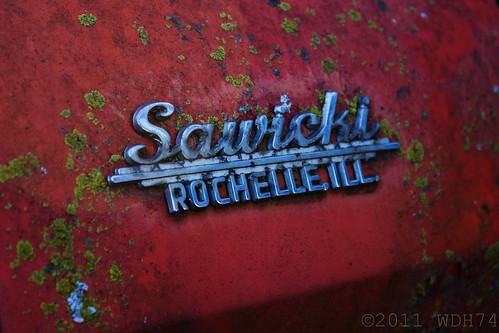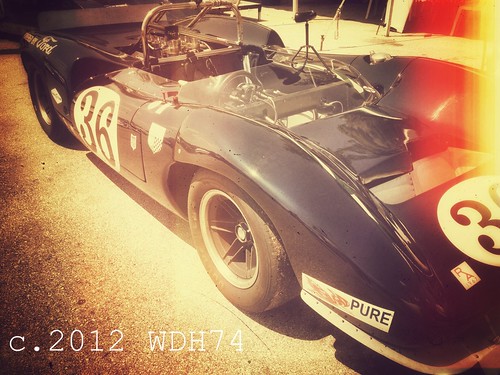Wednesday, January 30, 2013
Redman's Yarn Emporium
Monday, January 28, 2013
Ten Thousand Lakes
Saturday, January 26, 2013
Starved Rock Inn
Thursday, January 24, 2013
DeKalb
Monday, January 21, 2013
Swindler II
Owned by Fred Stone and Leonard Woods, Jr., and driven by Doug "Cookie" Cook, this car set numerous records in period, and won hundreds races during it's career. The team also was a rarity in the mid sixties, being one of the few racially integrated teams in racing. Owner Tim Woods (it was his son Leonard's name on the door, added to help keep young Lenny interested in the sport and out of trouble) was a succesful African-American businessman in the Los Angeles area, and formed a drag racing team with Fred Stone, a manager at his construction firm. Plenty of competitors had no idea that Woods was black, and in the end it really didn't matter as the team's results so often spoke for themselves.
Friday, January 18, 2013
Bowlway
Wednesday, January 16, 2013
Return To Sioux City
This one happens to be a Swift and Co. box car, with instructions to send it back to Sioux City.
Monday, January 14, 2013
Friday, January 11, 2013
The Catlow Theater
Vintage neon at the Catlow Theater in Barrington, Illinois. Opened in 1927, this single screen gem also hosted stage shows, and still has most of its vintage charm. I believe this sign dates from the postwar period, probably the fifties. It has that look about it.
And, in a bright bit of news, until late last year, the Catlow was facing an uncertain future, due to the movie studios moving towards all-digital formats over old fashioned film. Upgrading costs typically go to about $100,000 per screen, something the Catlow's owners couldn't afford. Fortunately, a Kickstarter campaign raised the necessary funding, and this absolute gem of a theater can continue to serve the Barrington area (as evidenced by the fact that Skyfall is on the marquee!).
Wednesday, January 9, 2013
Masonic Temple
A former Masonic Temple, latterly a banquet hall, in Aurora Illinois. Built in 1922, this neo-classical building has fallen on hard times the last few years. It's completely fenced off, including the sidewalks out front, presumably to protect passersby from falling masonry. The stone is stained and dirty, the bas relief Masonic symbols above the door and at the peak of the roof have smoothed out with the weather, windows are broken, and weeds grow atop the entryway. I don't know what the current status of this building is, but I fear it's endangered.

Monday, January 7, 2013
Sawicki Chevrolet
The logo on an old Chevrolet work truck, a late fifties Viking that's been left to the elements.
And, Sawicki Chevrolet is still a going concern.
Friday, January 4, 2013
Around the Clock
Vintage neon sign outside of a vintage restaurant in Crystal Lake, Illinois. I'm told this sign works pretty well, too, and looks great all lit up.
Thursday, January 3, 2013
Coke Machine
The machine sits outside all the time, in front of a vintage fifties themed restaurant.
Tuesday, January 1, 2013
Lola
One of the legendary names in motorsports, Lola built cars for many formulae, including F1, 2, 3, 5000, Atlantic, and various USAC and Indy Car series. But they were probably best known for their sports cars-Lola's original GT was the progenitor to Ford's GT40, and the company was successful in endurance racing through much of the sixties.
The T70 was probably Lola's most successful sports car, and the hot setup in the early days of the Can-Am. The car's first major win came in 1965, with Walt Hansgen's win at Laguna Seca, and John Surtees went on to win the '66 championship running his own Chevrolet-powered example. Within a couple of seasons the McLaren M6 became unbeatable, despite improvements to the Lola (including a coupe version). However the T70's low(ish) cost and reliability helped it remain a popular racing car until the early 70's. They remain so today in historic racing.
This is a '67 Mark III spider, and was photographed this past summer at Road America.
